Next on our quest for forearm stand we're strengthening the upper body and core. If you missed the exercises to build flexibility and strength in your shoulders, check it out here.
Start in forearm plank with your elbows aligned directly under your shoulders. Stabilize your foundation by pressing your forearms into the ground to dome your upper back (protract shoulder blades) and scoop your shoulder blades down your back (depress scapula) then imagine your forearms gliding towards your toes and notice a tone outside your ribcage (engage latissimus dorsi). Pull your bottom ribs in while lengthening your tail to create a neutral spine. Feel your big toes touch and squeeze an imaginary block between your legs, activating your adductors for core strength.
Once your forearm plank is set, take a breath. On your exhale, ground into the left elbow and pivot to the outer edge of your right foot. Isolate the action in your transverse abdominals and obliques by keeping your shoulders stable. Keep the squeeze in your inner thighs, ankles and big toes. Return to center as you breathe in, and exhale as you shift to the outer edge of your left foot. Follow your breath through ten rounds, or until your alignment is compromised.
After your tenth round, return to the outer edge of your right foot. Shift all the weight to your right elbow and rest your left arm on your thigh, entering forearm side-plank. Take a moment to stabilize your foundation by wrapping your right shoulder blade down your back (depress scapula) and imagine gliding your elbow toward your heels, again activating your latissimus dorsi. Neutralize your spine by hugging your bottom ribs in and lengthening your lower back slightly. Maintain inner thigh engagement with tadasana legs.
For more intensity, lift your upper arm and externally rotate it so your palm faces the top of your mat. As you lengthen your arm overhead, see if you can achieve a similar tone outside your ribcage, without letting your bottom ribs flare forward. If you can breathe easily, add heat by lifting your top leg in line with your hip and shoulder. Hold for ten breaths each side.
Work hard, rest hard. Take a moment to stretch your shoulders in the first pose from last week's blog.
Your "core" is more than just your abdominals. Like the core of an apple, strength comes from the midline of your body.
Start lying on your back with a block between your inner thighs (easier) or ankles (harder). Take a satisfying breath in and exhale out of your mouth. Recognize the abdominal engagement that helps pull the diaphragm down so you can breath everything out. This is your super power! Throughout this exercise, tap into your root strength every time you exhale and maintain it as you inhale.
Lengthen your arms and use them as leverage. Press your palms firmly into the ground and squeeze the block while you lift your heels over your hips as you breathe in. Exhale and hover your heels an inch off the ground. The more you squeeze your block, the more it feels like one leg supports the other. Repeat ten times, inhaling as you lift and exhaling as you lower.
Let's tie this together in one-legged dolphin pose.
Start on your elbows and knees. Align your wrists with your shoulders, roll your shoulder blades back and down and press your forearms into the ground (depress + protract scapula). Tuck your toes and lengthen your legs like down dog. Let your head hang and press your chest back toward your thighs. Take 5 breaths to tune-up your pose, noticing if your elbows slide apart or ribs flare forward; activate your abdominals and latissimus dorsi.
Bring your feet together before lifting your right leg into the air. Glance at your toes while you rotate the pinky toe so it's looking at the ground and feel your inner thigh rotate toward the sky (internal rotation of femur bone). Feel your hamstring help lift your heel in line with your hips and elbows. Plug your right thigh bone into it's hip socket and pull your left hip crease back, creating a neutral pelvis. Hold 5 breaths, then switch.




